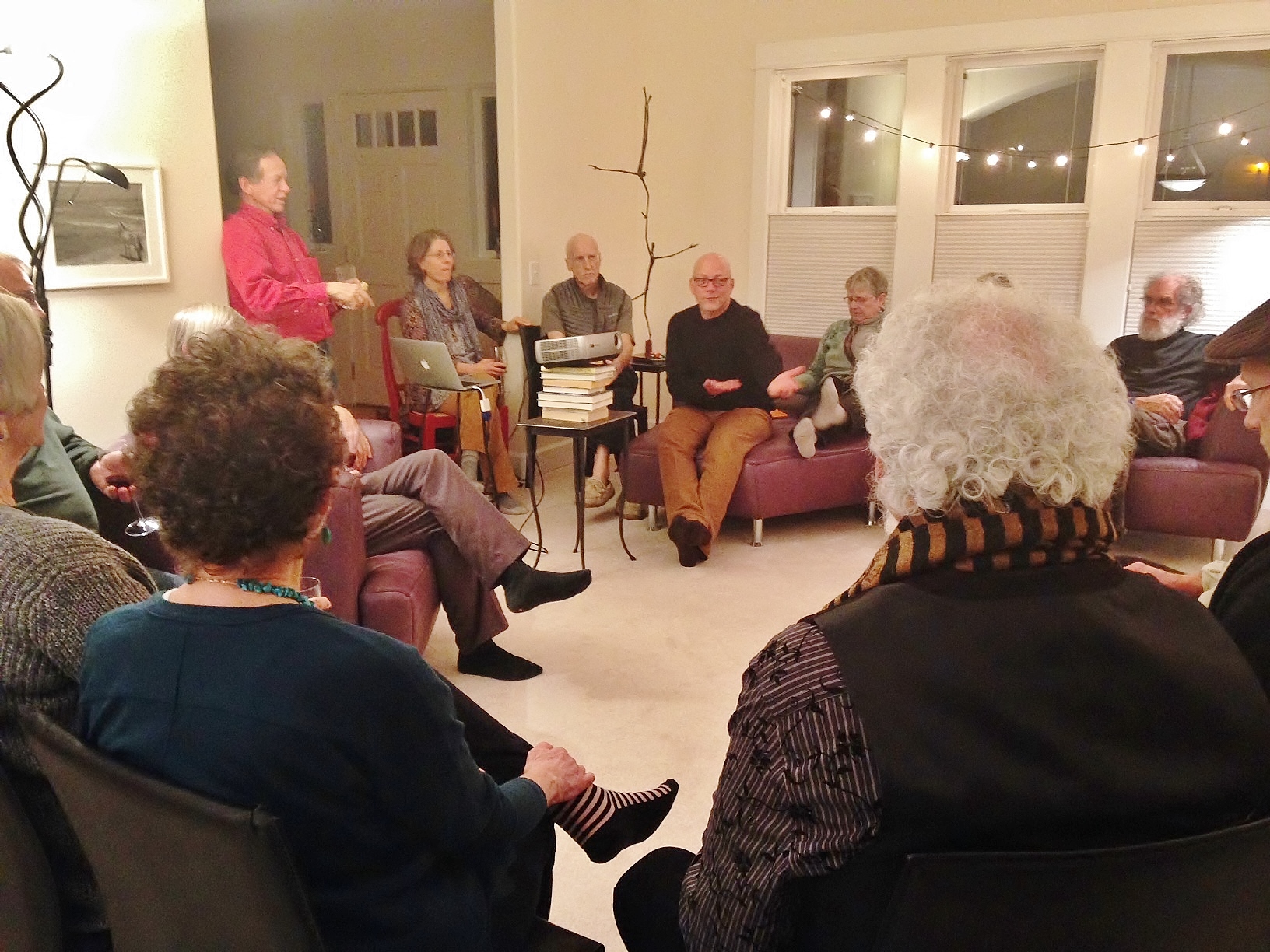As relayed by Ken Barnes, dutiful notetaker, January 23, 2016
Batya Friedman hosted the second discussion at her home about the artist process. We had comfortable seating, were surrounded by wonderful art, and had little treats and drinks to get us warmed up.
 Wayne Maslin opened the discussion with the topic he called “In Defense of Abstraction.” This was not the advertised topic, but was interesting nonetheless. Wayne’s thesis is that realistic figurative sculpture is an “oppressive master,” and limits the expressive potential in creating sculpture. In the spectrum of styles that range from abstract expressionism to realism, the work on the realistic end of the range is convergent around particular forms and styles. On the other end of the form spectrum there is no converging force so there is a wide expression of possibilities.
Wayne Maslin opened the discussion with the topic he called “In Defense of Abstraction.” This was not the advertised topic, but was interesting nonetheless. Wayne’s thesis is that realistic figurative sculpture is an “oppressive master,” and limits the expressive potential in creating sculpture. In the spectrum of styles that range from abstract expressionism to realism, the work on the realistic end of the range is convergent around particular forms and styles. On the other end of the form spectrum there is no converging force so there is a wide expression of possibilities.The group discussed risk-taking as necessary in the artistic process, but with limits. If one risks too much, then too many of your artistic endeavors will fail. If one risks too little, then the art never progresses.
As a retired junior high school art teacher, Wayne is passionate about getting people involved with art creation. Wayne asks the question of how do you sustain a creative urge over a lifetime? He likes to think of an ocean beach as the perfect canvas for creativity. It is a flat canvas that is wiped clean twice each day by the tides and is continually refreshed with new materials. Wayne likes to continually create using drawing, photography, stone sculpture and assemblage of the various bits he finds out on walks.
Bob Leverich (instructor at Evergreen State College) then weighed in with his thoughts on the Abstract vs. Figurative question. Bob suggested that there isn’t an “either/or” between Abstract and Figurative work, instead it is a “both/ and.” Artists should feel free to float back and forth or use any range of expression to convey their artistic ideas.
Art is the process of creating work out of an infinite choice of variables. The artist needs to trust the mind/psyche to get the right order. The artist also needs to trust the materials and yourself to find the way through the process.
“Work comes from work.” This quote from Bob references the idea that the more time you spend working the more ideas and choices you’ll have to pursue. Bob personally likes to do a lot of drawing and photography to keep his brain in artistic mode. With enough drawing you’ll see issues and ideas presenting themselves again and again and you’ll develop a new way of looking at something. He also counsels his students to use tracing in their work. It is a valuable way to capture an image and put it in a new context.
He talked about Indian sculpture, which is figurative but not purely realistic. The goal of Indian figurative sculpture is to represent Yogic breath. I’m not sure what this looks like, and Google Images is dominated by pretty young things sitting cross-legged on mats with their eyes closed, but I can imagine a fully inflated chest.
Henry Moore’s early work was very concerned about Vitalism. The dictionary says this is a theory that live things differ from inert matter in that there is some inner spark or energy, in addition to the elements that combine to make up our bones and muscles. Henry Moore wanted to infuse his work with this spark.
Bob also discussed our old companion – fear. We worry that we don’t know what we are doing and that fear is detrimental to our process. Bob tells his students (and himself) to just keep moving. As a friend says to me frequently, “you have to put on your uniform and show up to get anything done.”

